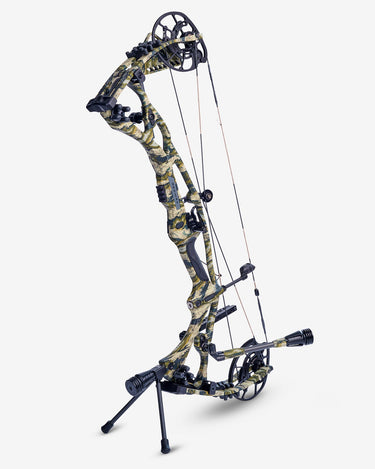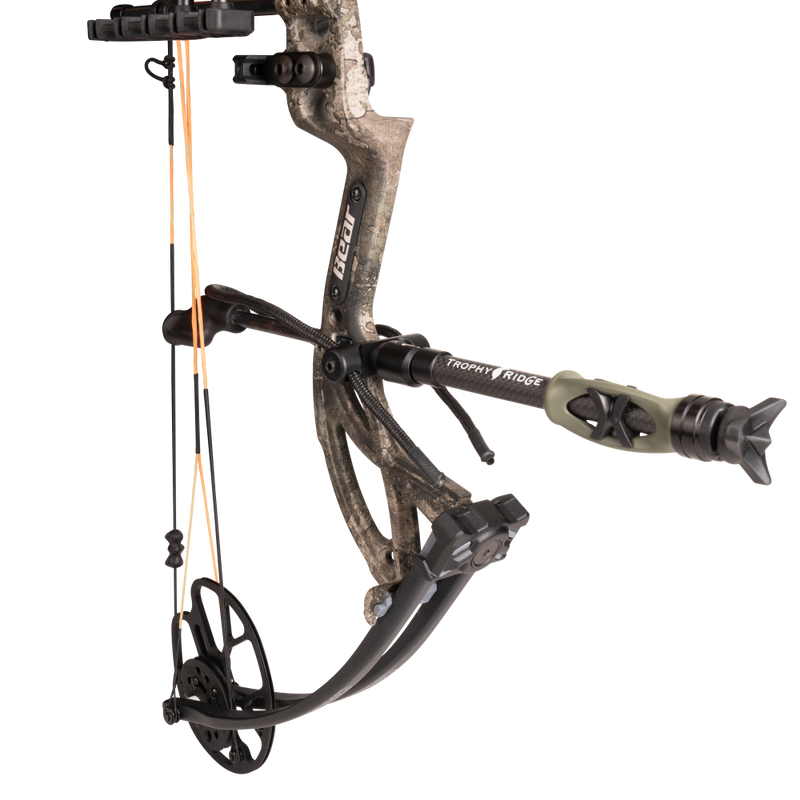Maximizing Your Archery Performance With the Right Substance Bow Stabilizer: a Thorough Summary
In the realm of archery, consistency and precision are critical to attaining optimal performance. One vital yet often-overlooked element in improving precision is the compound bow stabilizer. This unassuming device plays a substantial duty in steadying your purpose, reducing bow torque, and soaking up resonances. Nevertheless, the efficiency of a stabilizer rests on various factors, consisting of placement, design, and weight. By understanding the subtleties of choose and enhancing a compound bow stabilizer, archers can fine-tune their tools to elevate their capturing experience to brand-new levels of effectiveness and control.
Importance of Bow Stabilizers in Archery

In addition, bow stabilizers help in stabilizing the weight distribution of the bow, which can enhance the archer's stability while firing and intending. By adding weight to the front of the bow, stabilizers can minimize the quantity of torque experienced upon release, causing a smoother and more controlled shot - compound bow stabilizer. This weight circulation also helps in holding the bow consistent for a longer period, enabling the archer to intend extra accurately
Sorts Of Substance Bow Stabilizers
When taking into consideration the numerous kinds of substance bow stabilizers readily available, it is crucial to recognize their unique functions and functions to identify the most suitable alternative for taking full advantage of archery performance. The most common types of substance bow stabilizers include sidebar stabilizers, front stabilizers, and back stabilizers. Back stabilizers, also called back stabilizers, are placed to the back of the bow and help in counterbalancing the weight of various other devices, resulting in improved security and constant aiming.
Elements to Take Into Consideration When Selecting
In reviewing compound bow stabilizers, recognizing the unique attributes and features of each kind is essential for making an educated decision on one of the most ideal option to boost archery performance. When selecting a stabilizer, one must think about the weight of the stabilizer itself. While a heavier stabilizer can supply more stability by minimizing the bow's movement, it may also trigger exhaustion throughout long shooting sessions. Balance is an additional vital variable to ponder. The stabilizer's length and style significantly affect the bow's equilibrium, affecting the shooter's ability to hold consistent purpose. Furthermore, the product of the stabilizer can affect its performance. Carbon fiber stabilizers are lightweight and take in resonances well, enhancing accuracy. Additionally, the number and adjustability of dampeners on the stabilizer can adjust its efficiency by lowering sound and shock upon release. By thoroughly examining these aspects, archers can choose a compound bow stabilizer that lines up with their shooting style and maximizes their overall performance on the archery variety.
Installation and Adjustment Tips
For optimal efficiency and accuracy you can try here in archery, anchor grasping the setup and modification of your bow stabilizer is necessary. Appropriate installation begins with attaching the stabilizer to the bow's riser, guaranteeing it is strongly safeguarded.
When adjusting the stabilizer, begin with tiny incremental modifications instead than radical adjustments. Pay interest to just how the bow reacts to changes in stabilizer settings and make modifications accordingly. Regularly check the stabilizer's rigidity and general problem to guarantee it proceeds to function ideally.
Maintenance and Treatment Standards

It is also vital to save your bow with the stabilizer in a risk-free and protected location when not being used. Avoid leaving it in severe temperature levels or exposed to direct sunshine for extensive periods, as this could trigger damages to the stabilizer. Regularly check the stabilizer's positioning to ensure it is still appropriately placed on your bow. Complying with these upkeep and care guidelines will certainly aid you obtain the most out of your bow stabilizer and improve your general archery performance.
Verdict
Finally, selecting over at this website the appropriate compound bow stabilizer is vital for maximizing archery performance. Comprehending the importance, kinds, aspects to take into consideration, installment and modification ideas, as well as maintenance and care standards can substantially affect one's precision and uniformity in capturing. By selecting a stabilizer that fits individual requirements and choices, archers can boost their general efficiency and attain better outcomes on the range or in competitors.
Bow stabilizers play a vital function in improving an archer's precision and uniformity by lowering vibrations and maintaining the bow throughout the release of an arrow - compound bow stabilizer.In addition, bow stabilizers assist in stabilizing the weight distribution of the bow, which can improve the archer's stability while aiming and shooting. The most typical kinds of substance bow stabilizers include sidebar stabilizers, front stabilizers, and back stabilizers. Back stabilizers, additionally called back stabilizers, are mounted to the back of the bow and assist in counterbalancing the weight of other accessories, resulting in boosted stability and consistent intending. When selecting a stabilizer, one should take into consideration the weight of the stabilizer itself